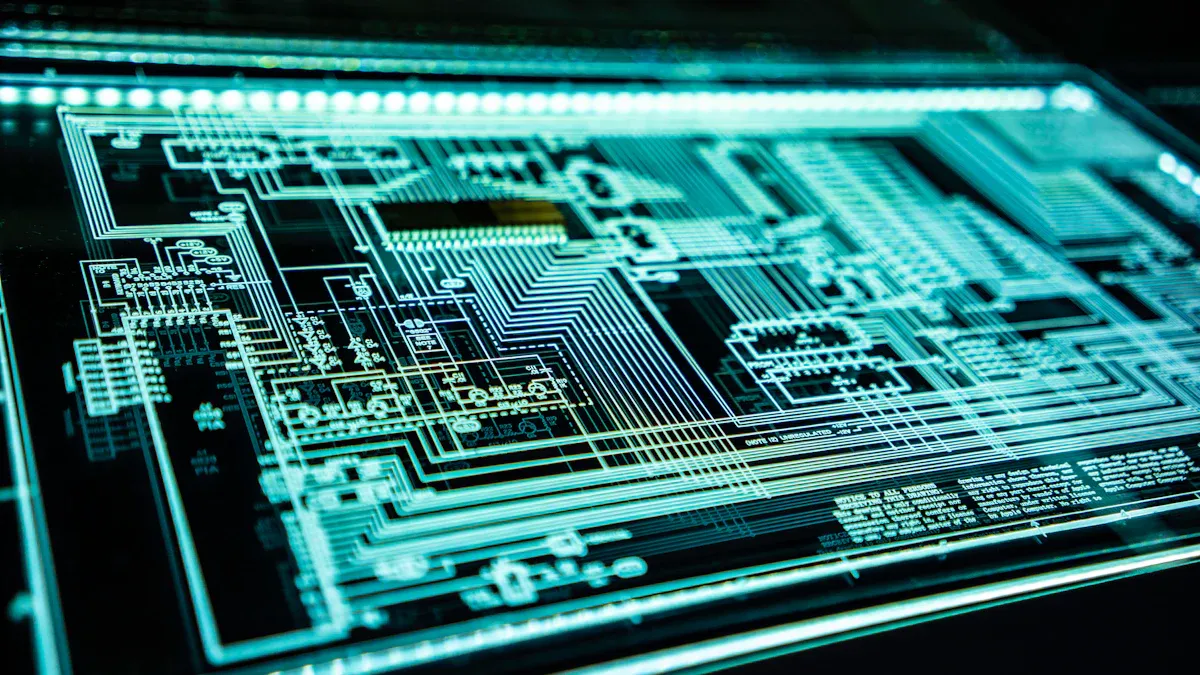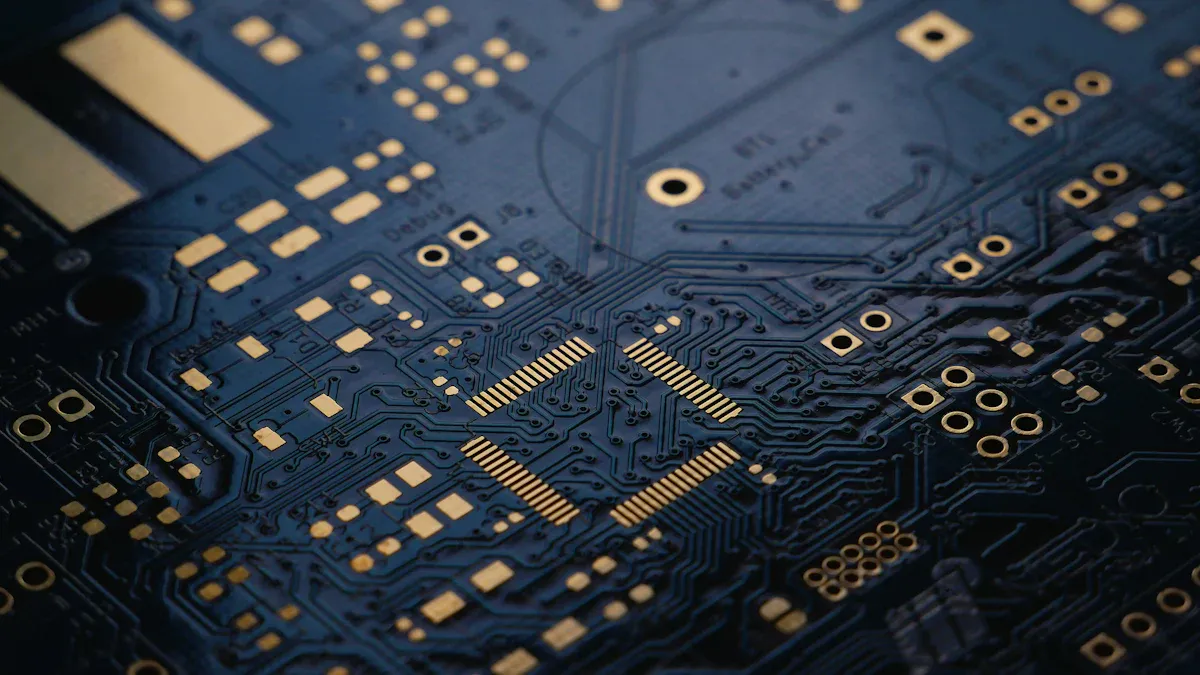
Every product sold worldwide has a special number called an HS code. For printed circuit boards (PCBs), this number is 8534.00.00. The PCBA HS code can be different, with common codes including 85177090, 8542.31, and 8543709990. These codes are very important in global trade.
They decide taxes, fees, and customs rules.
Correct HS codes prevent delays and help with smooth customs checks.
Wrong codes can cause fines, shipping delays, or legal problems.
Using the right PCBA HS code helps protect supply chains, save money, and maintain good business partnerships.
Key Takeaways
The HS code for printed circuit boards (PCBs) is 8534.00.00. This code helps with easy customs checks and following trade rules.
Using the right HS code for printed circuit board assemblies (PCBAs) is very important. Common codes like 8537 and 8542.31 prevent fines and shipping problems.
Follow simple steps to find the correct HS code. Know your product, compare with similar items, and ask experts to be sure.
Keep track of changes to HS codes and local rules. This helps avoid errors and follow customs rules properly.
Using correct HS codes can reduce import taxes and speed up customs checks. This helps your business and supply chain work better.
What Are HS Codes?

Definition and Purpose
HS codes are numbers used to identify products in trade. The World Customs Organization (WCO) created this system in 1988. It helps classify goods the same way across countries. Each code matches a product type, like PCBs or PCBAs.
HS codes do more than just classify items. They decide taxes, rules, and trade limits. Using the right code avoids fines and keeps trade smooth. This system also helps track trade data for better decisions.
Importance in Global Trade
HS codes are key to making global trade easier. They give a common way to name goods, avoiding mix-ups. For example, the European Union uses them to allow free trade. Singapore also speeds up customs checks with this system.
Correct HS codes help supply chains work better. Customs use them to set taxes and follow rules. Shipping companies use them to label goods properly. Without HS codes, trade would be slower and cost more.
Structure of HS Codes
HS codes are organized in levels to sort goods clearly. These levels include sections, chapters, headings, and subheadings. Each level gets more specific. For example:
Level | Description |
|---|---|
Sections | 21 groups for main types of goods. |
Chapters | Smaller groups for specific goods. |
Headings | Narrower groups within chapters. |
Subheadings | Exact types of goods under a heading. |
Take HS code 854231 as an example. It means “Electronic integrated circuits” and fits into:
Section XVI: Machines and electrical tools.
Chapter 85: Electrical machines and tools.
Heading 8542: Integrated circuits and microassemblies.
Subheading 854231: Electronic integrated circuits.
This setup helps classify goods correctly. It reduces mistakes and helps customs apply the right taxes. It also makes tracking trade data easier.
PCB HS Code and PCBA HS Code

HS Code for PCBs
The HS code for printed circuit boards (PCBs) is 8534.00.00. This code is for bare boards without electronic parts. PCBs are the base for electronic devices. They hold and connect different components. Using this code ensures smooth customs checks and follows trade rules.
To find the right PCB HS code, check the product details. For example, a plain board with no parts uses 8534.00.00. But if it has extra features, like built-in parts, it might need another code. Always double-check product details to avoid mistakes.
HS Code for PCBAs
Printed circuit board assemblies (PCBAs) are different from PCBs. They have electronic parts already attached. The HS code for PCBAs is usually 8537. This code is for boards with parts like resistors and chips.
Using the right HS code for PCBAs is very important. It helps follow rules, avoids fines, and speeds up shipping. Correct codes also help manage supply chains better. They give clear info for planning and tracking costs. For example, the HS code affects taxes, which impacts business expenses.
When classifying PCBAs, note the assembly level and features. A fully assembled board with advanced parts may need a special code. Providing documents like manuals can help with accurate classification.
Examples of PCB and PCBA Classifications
Knowing the difference between PCB and PCBA codes is helpful. Here are some examples:
Bare PCBs (HS Code: 8534.00.00):
These are plain boards with no parts attached.
They are the base for adding electronic components.
Basic PCBAs (HS Code: 8537):
These have simple parts like resistors and capacitors.
They are used in everyday electronic devices.
Advanced PCBAs (HS Code: 8542.31):
These have complex parts like microchips.
They are used in high-tech devices like computers.
Using the right HS code helps follow trade rules and analyze data. It also helps spot market trends and plan better. For example, correct codes let you study trade patterns and find new opportunities.
When declaring PCB or PCBA products, give clear details. Include materials, how they’re made, and their uses. For special products, show proof of their purpose. This ensures correct classification and tax rates.
How to Find the Right HS Code
Steps to Choose the Correct Code
Finding the right HS code needs a step-by-step process. Follow these steps to classify your product correctly:
Know your product type: Figure out the general group your product fits into. For example, PCB assembly is part of electronic components.
Check similar products: Look at how other countries classify similar items. This can help you find possible codes.
Use GRI rules: Apply the six General Rules of Interpretation (GRI). These rules guide you in picking the correct HS code.
Get a BTI document: A Binding Tariff Information (BTI) gives legal proof of your classification. It ensures your code is accurate.
Ask experts for help: Customs agents or brokers can guide you. Their advice can prevent mistakes in choosing the right code.
Stay updated on rules: Learn about changes in customs rules and HS codes. This helps you avoid problems and stay compliant.
By following these steps, you can make finding the right HS code easier. It also helps your products pass customs smoothly.
Using the Harmonized System
The Harmonized System is a worldwide method for sorting goods. It uses a clear structure to assign codes based on product details. You can use this system to find the right HS code for your PCB assembly or other electronics.
Here’s how to use the Harmonized System well:
Search online tools: Use websites like WCO Trade Tools or the Harmonized Tariff Schedule to find codes. These tools give detailed descriptions and legal info.
Find the right chapter: Look for the chapter that matches your product. For example, electronic parts are in Chapter 85.
Pick the heading and subheading: Inside the chapter, choose the heading and subheading that best describe your product. This ensures accuracy.
Double-check the code: Verify your chosen code using official sites like CROSS.
Using the Harmonized System makes things clearer and follows trade rules. It also helps avoid fines and delays at customs.
Dealing with Country-Specific Rules
The Harmonized System is standard, but countries may have their own rules. You need to consider these differences to classify your product correctly.
Here are some challenges with country-specific rules:
Confusing categories: Some products, like advanced PCB assemblies, don’t fit neatly into one group. This can cause errors.
Changing rules: Countries update their HS codes often. Staying informed is important to follow the rules.
Different interpretations: The first six digits of HS codes are the same globally, but countries can add extra digits. This creates differences in classification.
To handle these issues, you can:
Ask customs brokers: Get advice from experts who know local rules.
Read HS notes: Check the notes from customs for better understanding.
Work with your team: Involve your team to review and ensure correct classification.
By considering country-specific rules, you can avoid mistakes, clear customs faster, and keep your trade operations smooth.
Common Mistakes in HS Code Classification
Errors in Classifying PCBs and PCBAs
Mixing up PCBs and PCBAs is a frequent trade mistake. This happens because bare boards and assembled boards are different. PCBAs have parts like resistors and chips, but PCBs do not. Not explaining the assembly level or parts can cause wrong HS codes.
Studies show misclassification is a big problem. Small flaws, like scratches or color, make it hard to identify correctly. For example:
Defect Type | Error Rate (Co-DETR) | Error Rate (YOLOv6-L6) |
|---|---|---|
SC as SP | 0.07 | |
SP missed | High | High |
CS missed | High | High |
CFO as background | Yes | Yes |
These mistakes show why clear product details matter. Include materials and features to avoid errors.
Ignoring HS Code Updates
HS codes change often to match new products and trade rules. Using old codes can cause problems. For example, new tech parts may not fit old categories. This can lead to higher taxes or customs delays.
To stay updated, check the Harmonized System and U.S. Tariff Schedule often. Keeping up with changes ensures correct codes. Sending manuals and technical info also helps customs understand your product.
Forgetting Regional Rules
The Harmonized System is global, but countries add their own rules. The first six HS code digits are the same everywhere. Extra digits, however, differ by country. A PCBA might have one code in the U.S. and another in Europe.
To handle this, ask customs brokers or local experts for help. Share details like how the product is made and its use. For special items, give proof of their purpose to get the right code.
Fixing these mistakes avoids fines, speeds up shipping, and keeps you following trade rules.
Correct HS codes are important for smooth global trade. PCBs use code 8534.00.00, while PCBAs often use codes like 8537 or 8542.31. Picking the right code helps follow customs rules, avoid delays, and save money.
Impact Area | Explanation |
|---|---|
Lower import taxes | Right codes stop extra fees on imported goods. |
Faster customs checks | Correct codes make customs work quicker and avoid hold-ups. |
Trade agreement benefits | HS codes decide if products get lower tariffs under trade deals. |
Wrong codes can cause fines and money problems.
Use tools like WCO Trade Tools or the Harmonized Tariff Schedule to find the right code.
FAQ
What is the difference between a PCB and a PCBA?
A PCB is a plain board with no parts attached. It is the base for building electronic circuits. A PCBA is a PCB with parts like chips and resistors already added.
Why are HS codes important for PCBs and PCBAs?
HS codes help sort products for global trade. They set taxes, fees, and rules for shipping. Using the right code avoids fines and speeds up customs checks.
How can you find the HS code for your product?
You can search online tools like the Harmonized Tariff Schedule. Customs brokers can also help. Share details about your product, like materials and uses, for accurate codes.
Do HS codes differ between countries?
Yes, the first six digits are the same worldwide. But countries add extra numbers for specific items. Always check local rules to find the correct code.
What happens if you use the wrong HS code?
Wrong HS codes can cause fines or shipping delays. They may lead to wrong taxes or break trade rules. This can hurt your supply chain.
See Also
The Importance of HS Codes in PCBA Processes
Defining PCBA: What It Means for Electronics
Understanding PCBA: Its Role and Importance in Electronics
Decoding PCBA: Significance of This Abbreviation in Electronics